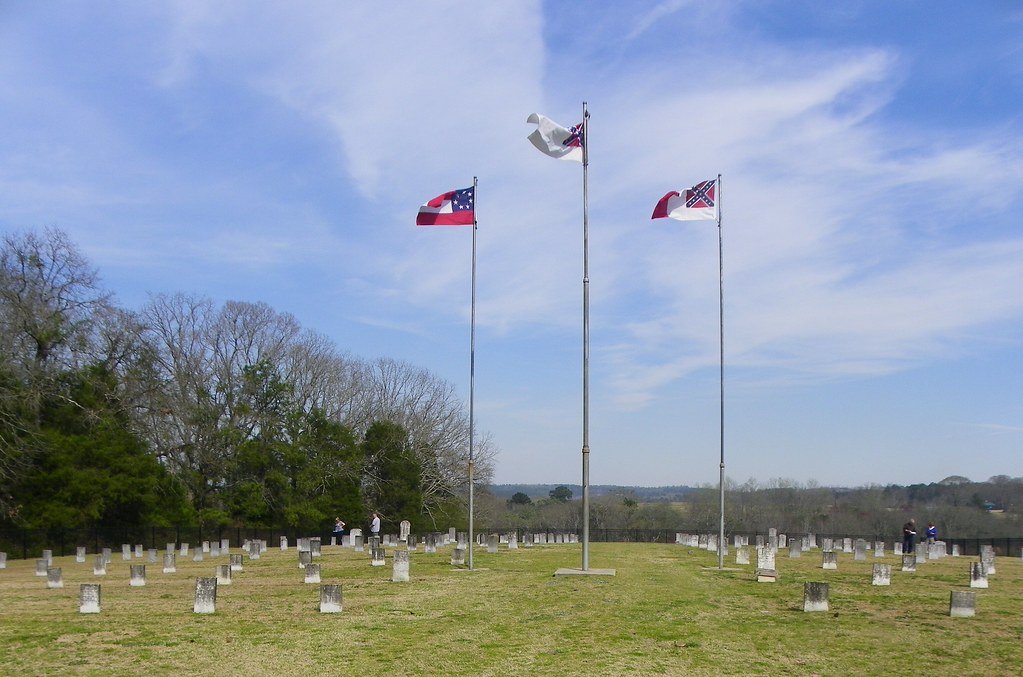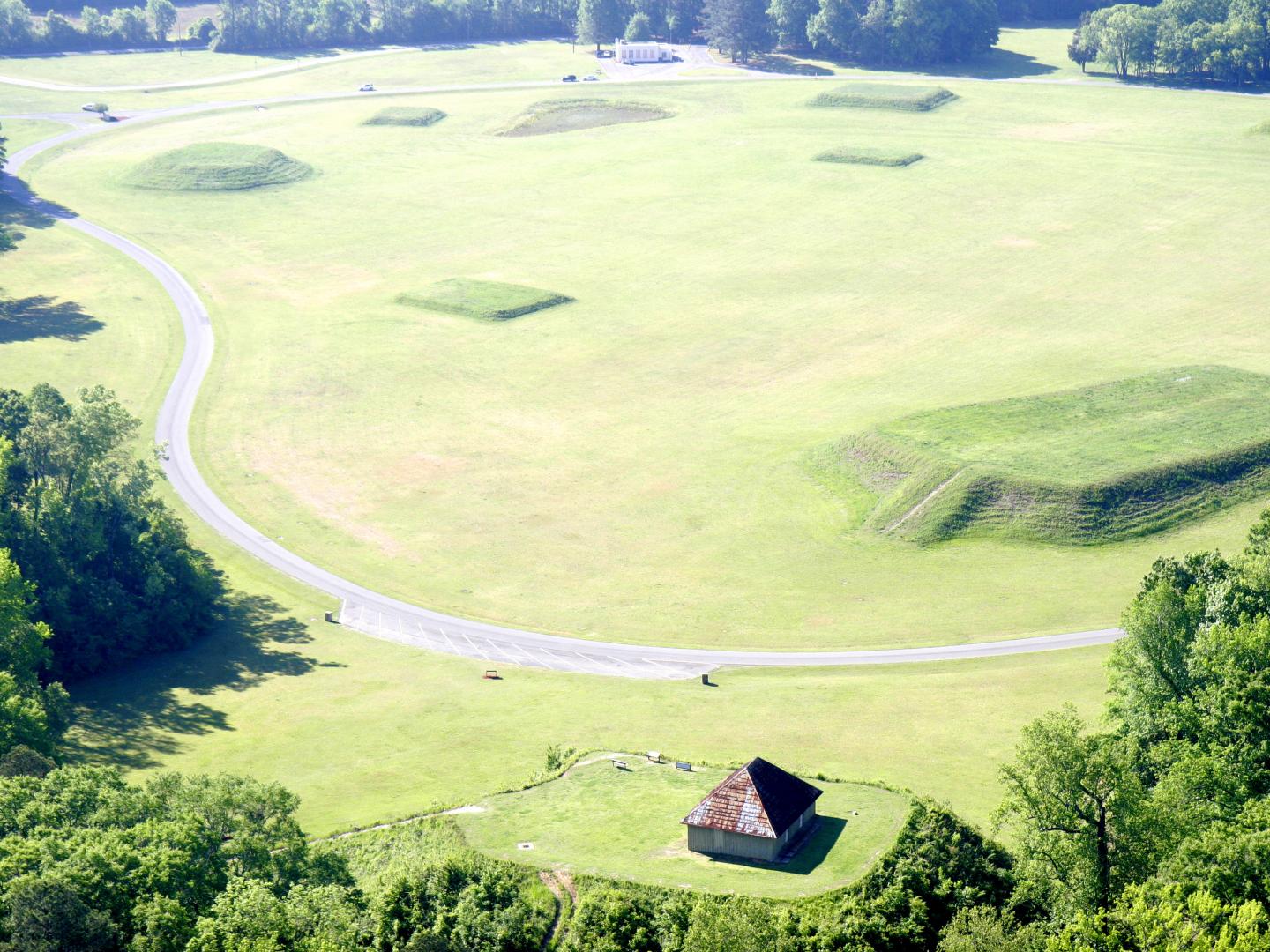Fort Morgan Has a Very Rich and Detailed History
Fort Morgan was part of a two-fort coastal defense system, which was put in place by the United States after the war of 1812.
The second fort in this system was Fort Gaines, which was built in the exact same two-star shape as this one.
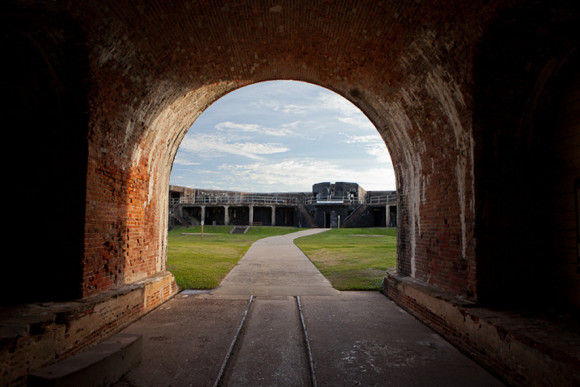 One of the Entrances Into Fort Morgan
One of the Entrances Into Fort MorganThey were built on opposite sides of the mouth of Mobile Bay, and Fort Morgan was designed specifically to guard the shipping channel.
It was built to protect the city of Mobile by direct artillery fire, onto any enemy ships that ventured into this narrow harbor.
It is located in a peninsula at the mouth of Mobile Bay on the eastern side, as you enter into Baldwin County Alabama.
It is operated by the Alabama Historical Commission and is registered as a National Historical Landmark.
The History of Fort Morgan
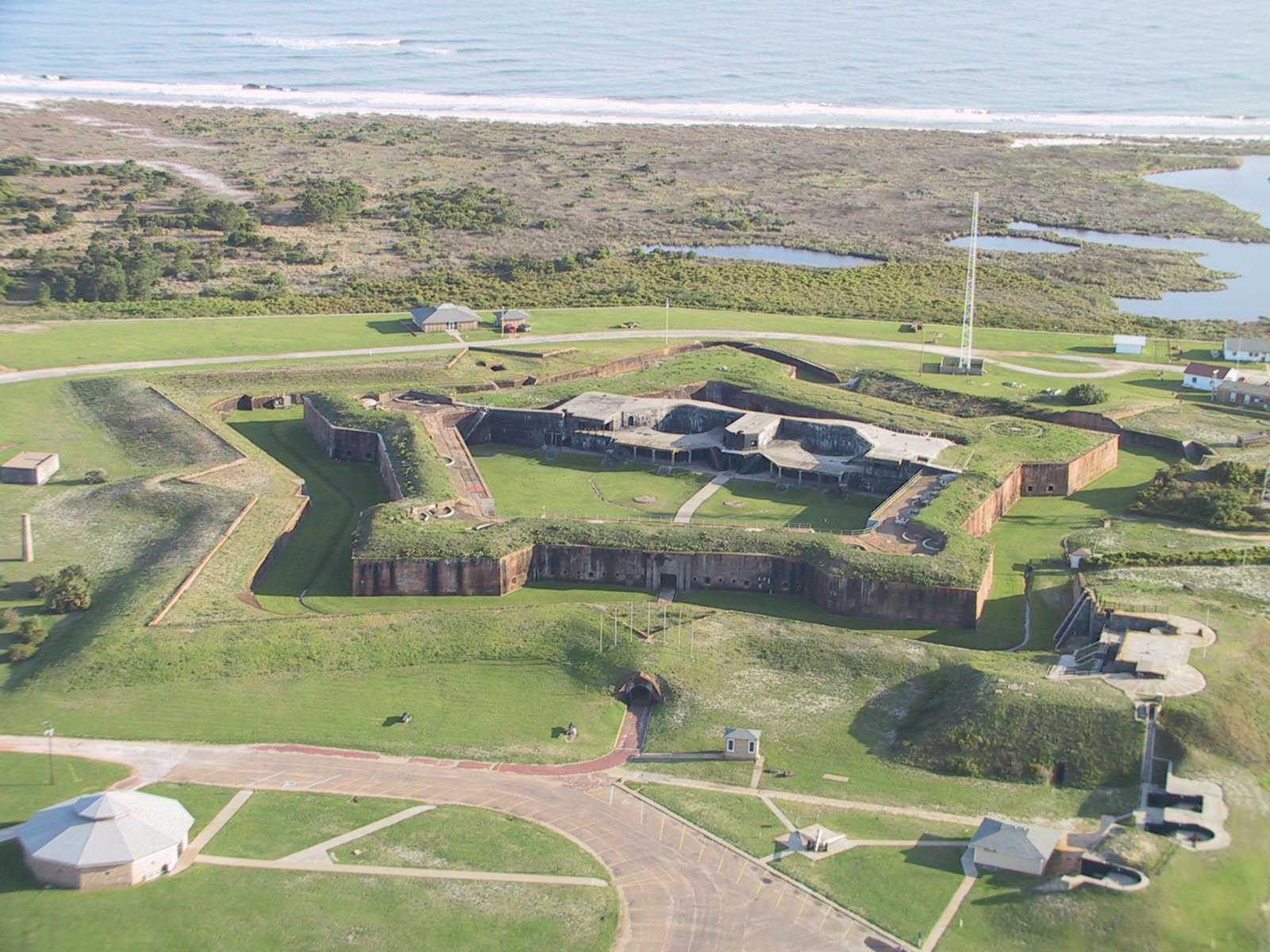 Overhead Picture Of Fort Morgan In Alabama
Overhead Picture Of Fort Morgan In AlabamaFort Morgan along with its twin has a very interesting history, and it is named after the Revolutionary war hero Daniel Morgan.
It is only three miles away from its famous twin, but the roles that they played are considered to be worlds apart.
Fort Morgan not only helped to protect Mobile Bay after the War of 1812, it also played roles in the Civil War, World War I, and World War II.
Built as part of the Third System of Fortifications, both structures were built to replace older structures that had become obsolete.
They were being replaced because their locations were not nearly as strategic as these newer ones, which would replace them.
There is also one other very interesting fact about Fort Morgan; it also housed the Mobile Point Lighthouse.
It served as the home for the Mobile Bay Lighthouse until the final year of the Civil War, when a new one was built.
Construction began on Fort Morgan in the year 1819, and it was officially completed in 1834.
Once it was completed, the United States Army garrisoned it and used it as a staging area for the Creek Indian Tribe.
This staging area occurred in the year 1837, when the Creek Nation was relocated to the Oklahoma Territories.
It would play a major role in the Civil War, and it all started to take shape as Alabama politicians decided on sessions from the Union.
Fort Morgan and the Civil War
On January 3, 1861, right before dawn, the Confederate Army took control of Fort Morgan, and it will hold this control until August of 1864.
This action took place eight days before Alabama officially seceded, and once they gained control, they immediately began to strengthen its defenses.
Their major focus was the main shipping channel that was opposite of the fort.
The reason for this was simple; it was the only place in the channel where the water was deep enough for a warship to pass through.
The Confederate Army placed 18 of their heaviest guns to face this channel, and they began to dig redoubts and trenches east of the fort.
They did this in order to protect it from any attack by land.
Once the Civil War started, they also provided fire for blockade runners, who were seagoing steam ships that were used to get through Union Blockades.
However, the Confederate Army’s stronghold of Fort Morgan was about to fall, once the Battle of Mobile Bay started.
Once the attack by the Union troops began, they easily took control of the sister fort, and captured the Confederate warships the Tennessee and Selma.
Once they accomplished this, they set their focus on capturing Fort Morgan.
After two weeks of solid bombing and setting parts of the structure on fire, they Confederates surrendered on August 23, 1864.
In the year 1867, the Corps of Engineers repaired the heavily damaged fort, but it lay basically empty until 1895.
Fort Morgan and World War I and II
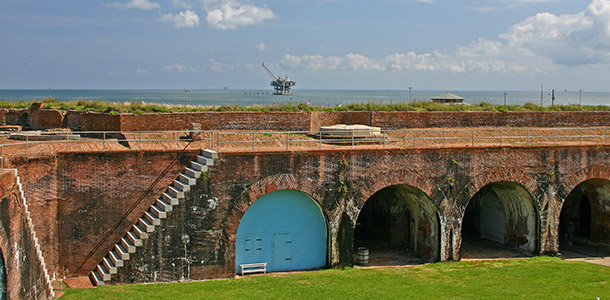 The Mobile Bay Civil War Trail Includes Fort Morgan
The Mobile Bay Civil War Trail Includes Fort MorganIn 1895, the United States government again recognized the need to defend Mobile Bay, and they began to reinforce Fort Morgan.
By the year 1904, they had placed 19 guns and mortars in the fort, which made it one of the most fortified in the country.
However, nothing more was done and by the start of World War I, these arms were considered to be outdated.
Once the war started, it was used as a training facility, but by the year 1923 the War Department declared it obsolete.
They sold the structure as well as the land to the State of Alabama in the year 1927, to use as a state park.
However, it was reactivated for a short time once World War II started, where it was armed to counter any U-boat threats in the Gulf of Mexico.
After the war ended, they returned it to the State of Alabama, and officially ended the harbor defense of Mobile Bay.
Today Fort Morgan is state park, where school and group tours are conducted.
It also offers living-history programs during the months of April, July, and August, and has several Civil War era collections on display.
It also has several late 19th centuries as well as early 20th century photographs and documents on display, as well as 12 artillery pieces.
This rich history makes Fort Morgan and excellent day trip for you and your family, but you will need to check the tour schedules before you go.
References
http://www.encyclopediaofalabama.org/article/m-4927

Alabama Gift Store
Numerous Items for You and Your Family to Enjoy
See it here at the Gift Store
Copyright 2019-2023 Alabamabackroads.com
All Rights Reserved
